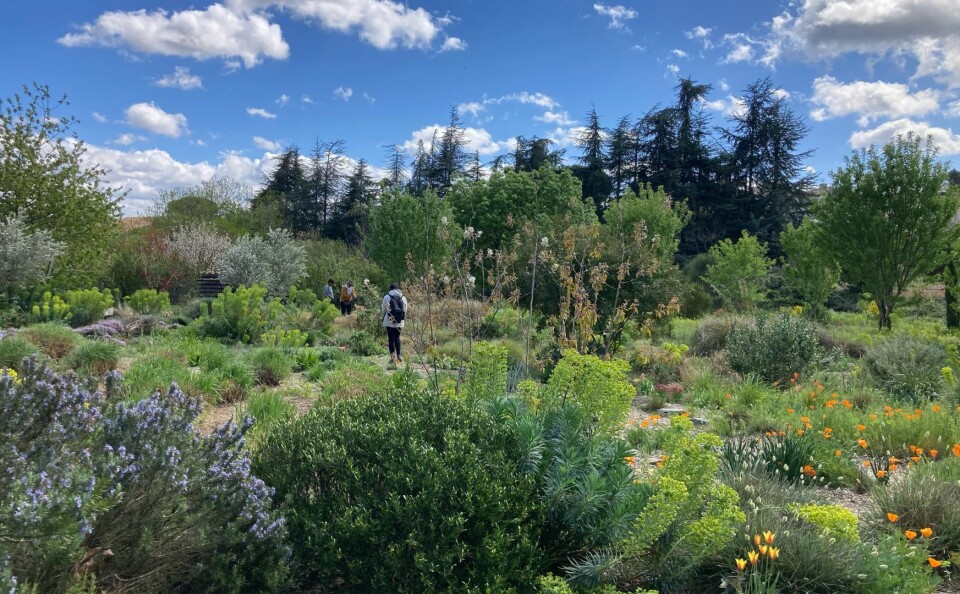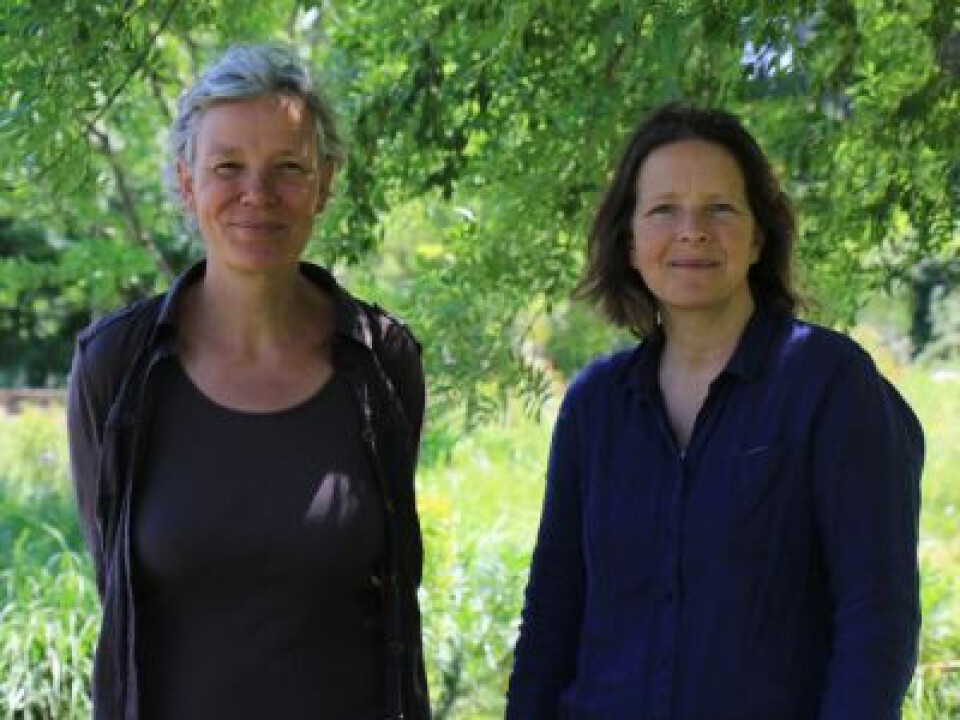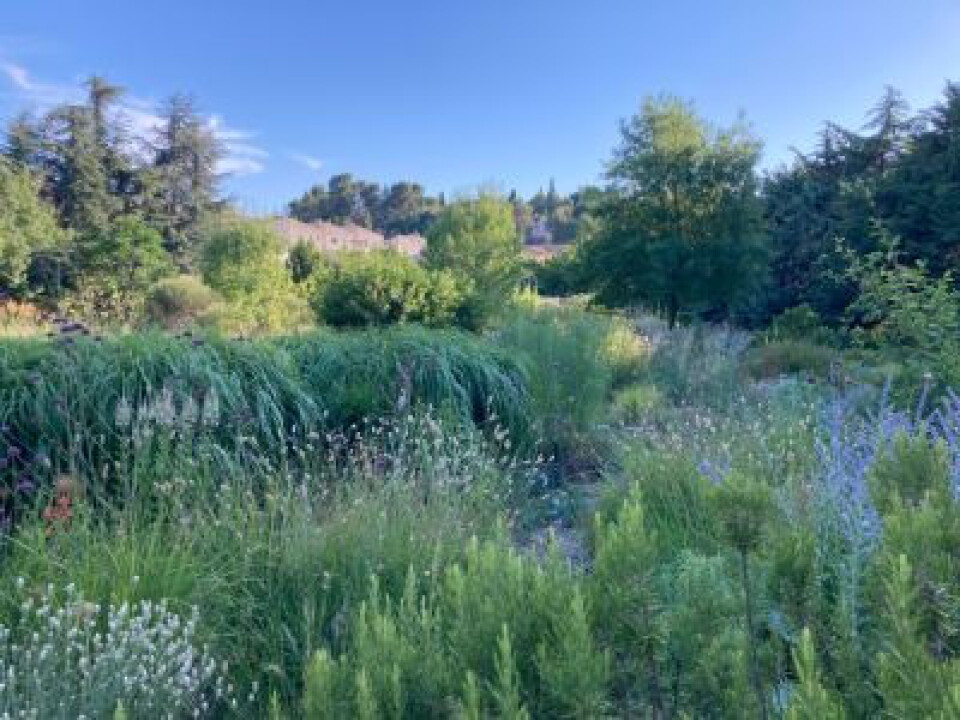-
The origins and meaning of tirer les marrons du feu
As Christmas approaches, we look at a phrase to describe someone who takes advantage of a situation
-
All wrapped up for Christmas: how to protect your plants in France this winter
Discover effective methods to shield your garden plants from winter frost and cold, ensuring their survival and health through the chilly months
-
Preparing your French garden for the festive season and the year ahead
Christmas veg harvest, sustainable Christmas tree options and great deals on outdoor furniture for next summer
Visit: stunning dry garden in Aude wakes up like spring in Autumn
Two horticulturists experimented with minimal watering and created a beautiful garden packed full of the toughest plants

Step outside your comfort zone a little this September and visit the dry Mediterranean garden of Kate Dumbleton and Imogen Checketts, known as Le Jardin Champêtre, deep in summer-sleepy Aude, Occitanie.
Here the plants are experiencing a second spring, with grasses at their peak in the early autumn light – look out especially for the moody mauves and greys of the little bluestem grass, Schizachrium scoparium, and the yellows of September-flowering Helianthus.
Weaving their way through, like a game of paintball, are the lipstick pinks, reds and oranges of Nerine, Watsonia and Bulbine, all perfect subjects for a dry, virtually frost-free garden.
Read more: New roses bred for resistance
A French odyssey on dry gardening
When they discovered their future garden – essentially a kind of showcase for their thriving design and nursery business – Kate and Imogen were professional horticulturists on a year-long French odyssey to learn more about dry gardening.
After spending a sizeable chunk of time working on the neighbouring garden and nursery of another Englishwoman who specialised in a huge range of plants for dry gardens, they fell in love with the fertile river valley and the backdrop of the mountains, as much as with the flora of the surrounding garrigue, and purchased the land that was to become their garden ten years ago in 2013.
The atmosphere of the planting owes much to the native flora of the surrounding limestone hills and nothing to the spikey drama of gardens populated by plants like agave, so favoured by other gardeners in the same climate.
Neither Kate or Imogen are fond of that style for practical reasons. “A client recently recounted the pain of falling face down, while weeding a plot of inherited ‘spikiness’,” Kate recounts. “Yup”, Kate said, “That’s why I’m not fond.”

Photo: Horticulturists Imogen Checketts and Kate Dumbleton; Credit: Le Jardin Champêtre
The garden is a trial ground where plants are tested
How does this garden function as a place to leave your comfort zone behind? Many of us garden, after all, in increasing heat.
Answer... this is a showcase garden for Kate and Imogen’s design business. It most definitely is not a safe haven for their favourite plants. Any plant – no matter how well loved – that shows signs of intolerance to the increasing hot and dry conditions experienced during recent years will eventually be shown the door. The garden is a trial ground, as much as a thing of beauty.
In both their own garden and those of clients, plants are watered for the first season during dry spells – and ideally never again.
“If we put something in and don’t water it and it thrives – it sometimes happens – that one goes on a list of the absolute winners,” says Imogen.
Consequently, the range of plants has changed markedly since the two arrived here.
Plants are made to ‘tough it out’
Miscanthus – once extensively used for creating a tall, mobile backbone of structure and texture in large flat areas of garden – is increasingly not used in client design.
Imogen remarks: “If we want a big grass now, we use Stipa gigantea and Amplodesmos mauritanicus [stramma or rope grass] – for the same effect – and a lot of clump-forming Sesleria and Panicum.
“Rudbeckias are also disappearing from our own garden. I noticed that I was having to give them more than one drink during the summer.”
Read more: French garden: choose drought tolerant daisies and echinacea
Soil improvement at planting time has been banished from both gardens – their own and their clients’ gardens – sometimes with a degree of customer alarm.
“We have almost got to the stage where we are tempted to wash all the existing soil off the root system to make sure the plants can tough it out in their new positions!”
Their job, as Kate sees it, is to help clients choose a selection of plants that survive in a harsh climate and then to design borders so that those plants – the ‘palette’ for the client’s own individual garden with its own particular conditions – look beautiful together.
“Our own garden isn’t lush,” Imogen says, “but it’s full and that’s what we are after. Like an English garden, but with completely different plants. Not that classic static dry Mediterranean-garden look you so often get.”

Photo: A layered look and not an agave in sight; Credit: Le Jardin Champêtre
Creating a layered look with dry plants
A strong feature in their planting style is ‘layered’ planting, which not only provides visual structure to please the eye, but also creates microclimates.
The first layer will feature typical Mediterranean trees and shrubs such as Arbutus unedo (‘madrone’), olive, pomegranate, Pistacia lentiscus (‘mastic’), Cotinus (‘smoke bush’) and so on, with an emphasis on visually strong, dark shapes, providing a little shade.
From this rises a fluid lower layer of grasses and see-through plants like Verbena bonariensis and Perovskia atriplicifolia (now Salvia yangii).
A final layer of silver or green foliage made by stalwart thymes and slightly unusual plants like Achillea crithmyfolia and A. coarctata, hallmarks their design as the product of committed ‘dry plants’ people, on a mission to find what thrives.
Garden goes to sleep in the summer
In the early years of Kate and Imogen’s business, the nursery was open every weekend for nine months of the year, but as the design business really took off – largely by word of mouth – opening times dwindled to specific weekends.
During the months of July and August the business winds down considerably and their show garden goes to sleep a little.
“We generally go away at that time – on vacation and visiting new clients,” Imogen says. “Sometimes, before going away, we’ll take a hedge trimmer to large areas and by the time we come back to the garden again, the Mexican sages, as well as Salvia verbenacea (wild clary/wild sage) are building up to a second flush of flower.”
Imogen’s and Kate’s skills complement each other
These are two perfectly complementary design minds. “If you employ us,” jokes Imogen, “you get two for the price of one.”
Imogen, artist by nature, always has an eye for the big ‘painting’, and particularly enjoys the small splashes of detailed colour provided by species tulips in spring, as they weave their way through the grasses. Generally, she says ‘no’ to any other tulip, with the exception of ‘Ballerina’, which makes the grade by virtue of colour and graceful shape!
Kate, with her background in organic gardening and permaculture, is determinedly looking out for the protection of a healthy soil and the satisfying vision of ‘natural’ planting, appropriate to their adopted home in the midst of this beautiful garrigue plant community.
If Imogen’s bobbing tulips are not exactly to her taste, she agrees that they have an important place in the spirit of the garden’s design.
The autumn portes ouvertes at Le Jardin Champêtre are 14/15 October, from 14:00 to 18:00, but you can also visit by appointment if you ring 07 80 43 32 62.
19bis av. de la Montagne Noire, 11160 Caunes-Minervois; lejardinchampetre.com
Related articles
Plea to plant local flowers in your gardens in France
French vegetable gardens offer fresh job prospects
What can I do about weeds growing from French neighbour’s garden?
























